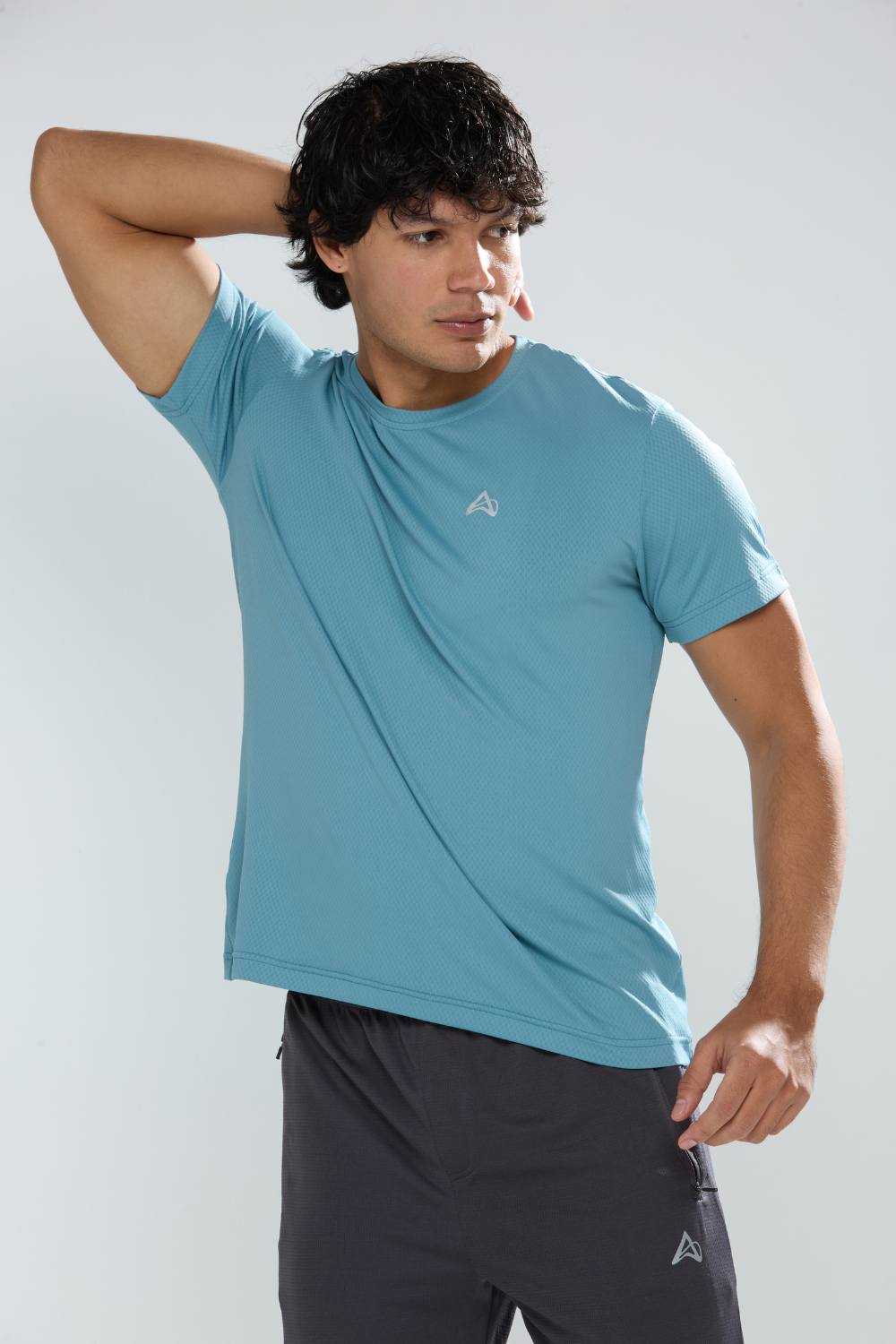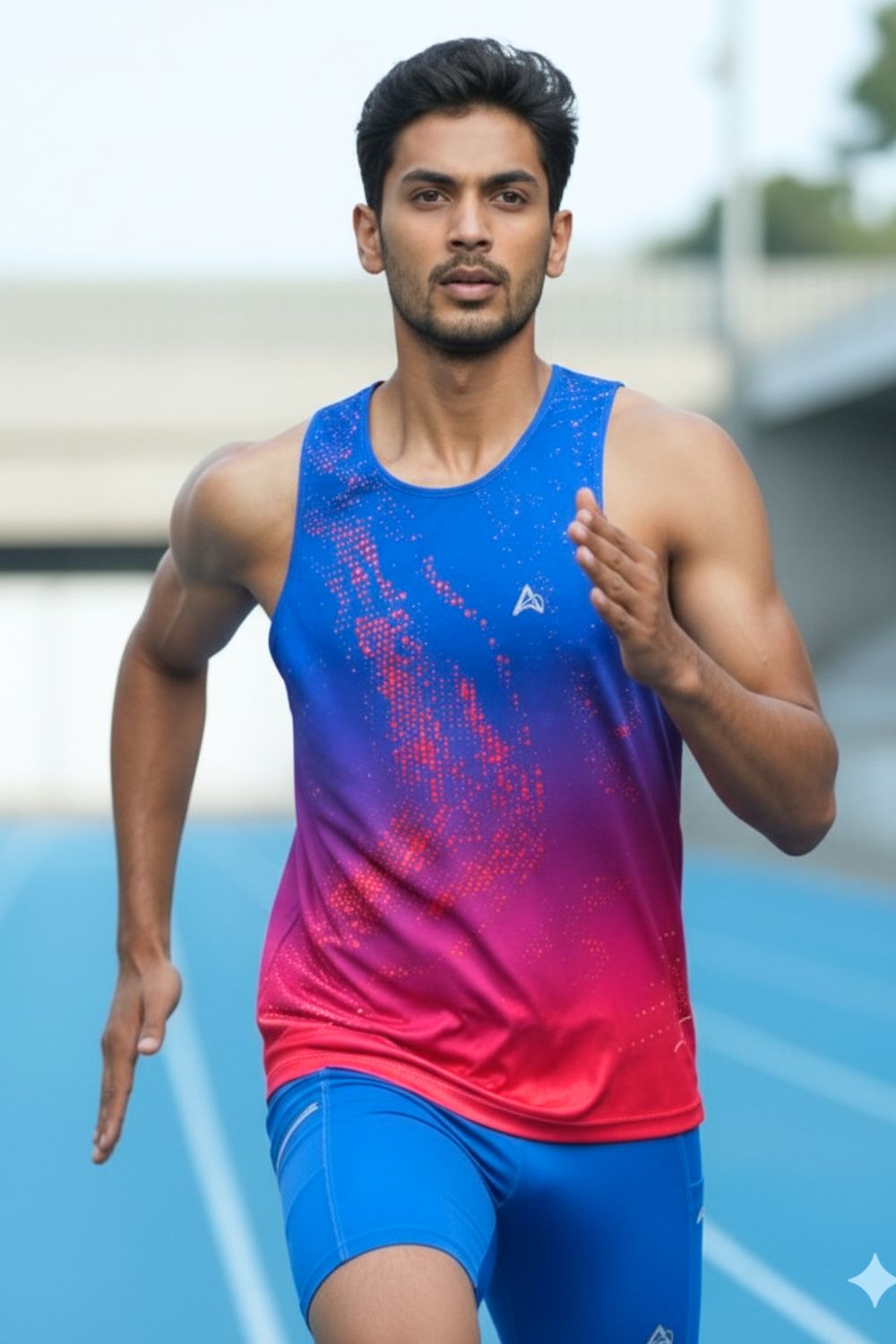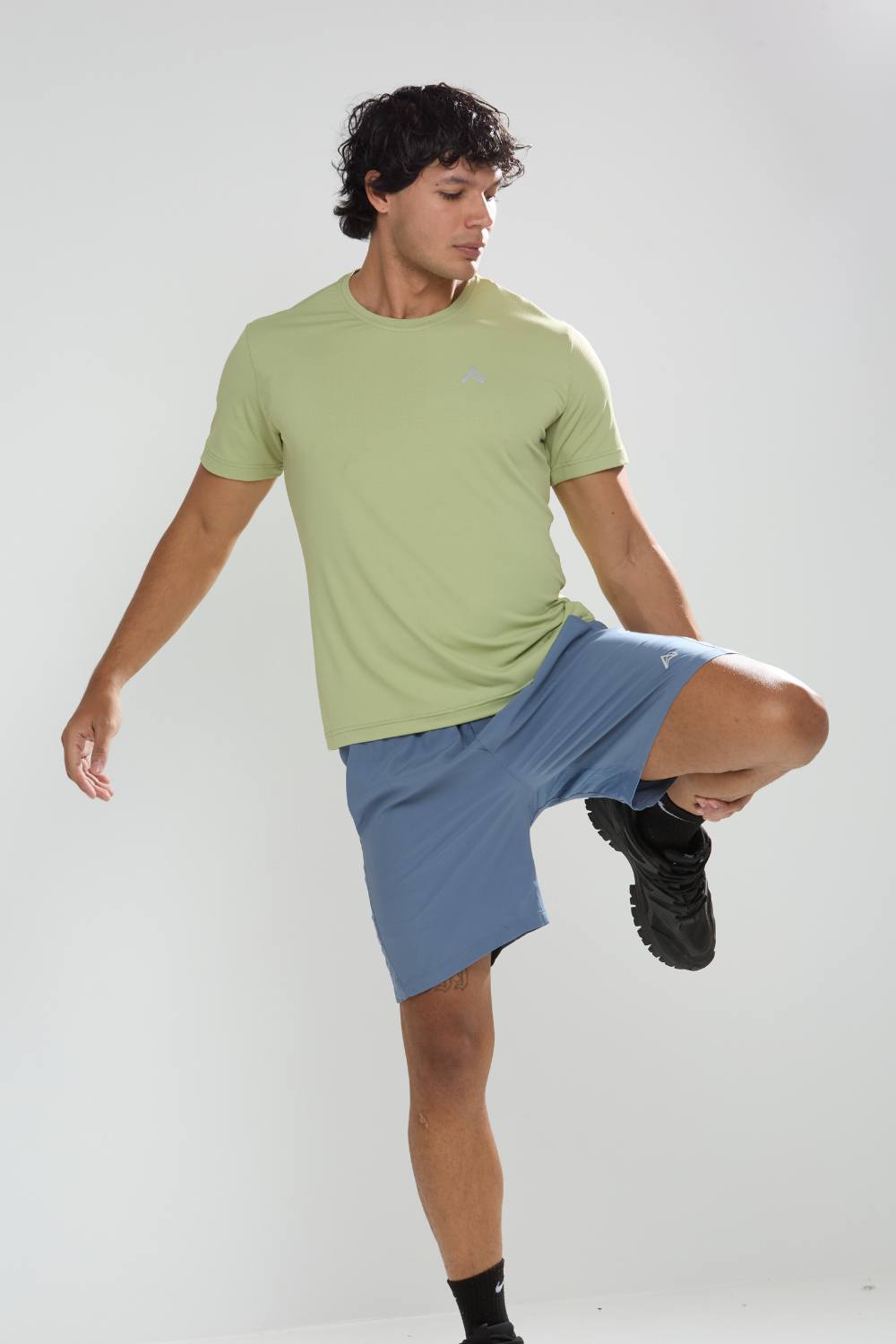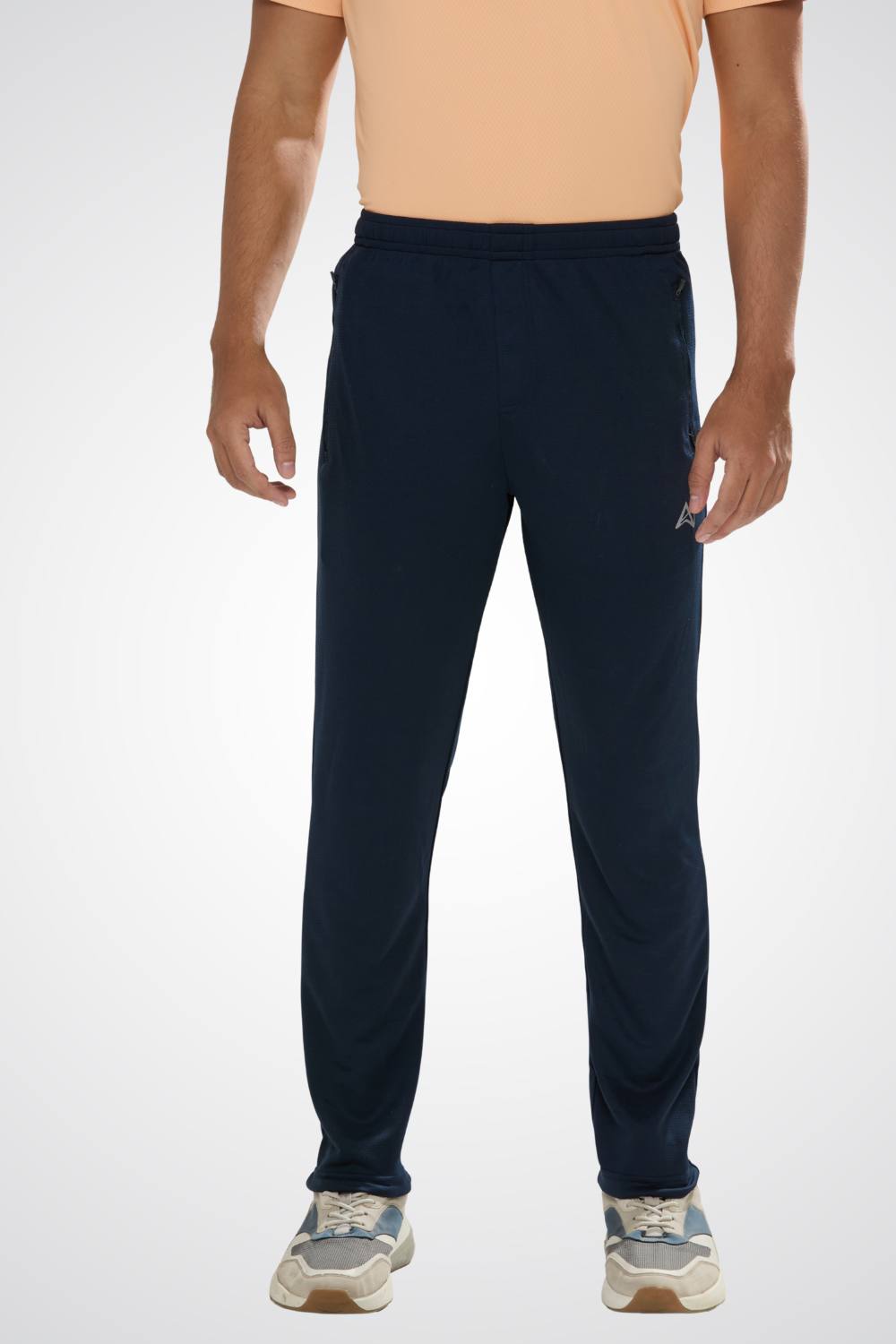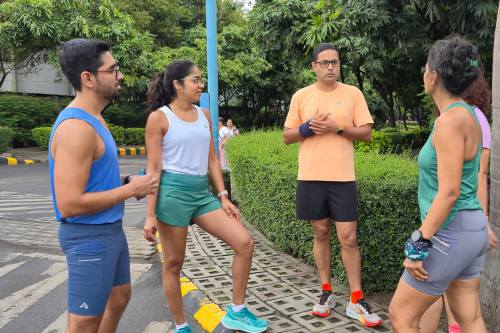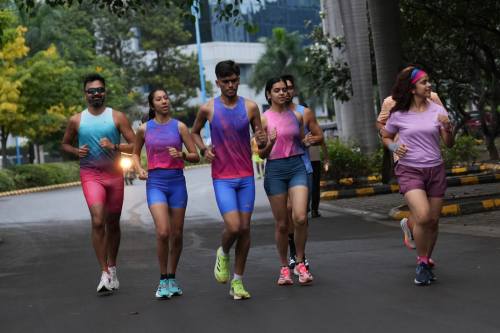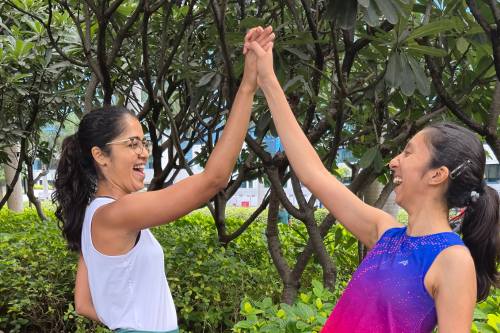Quick Listen:
The crack of the starting pistol echoes across the dawn-lit track, and suddenly, the world blurs into motion a symphony of pounding feet, determined breaths, and unyielding drive. Runners surge ahead, not as a uniform cadre of elite athletes, but as a vibrant mosaic: some on blades, others in wheelchairs, many navigating the subtle hurdles of recovery or neurodiversity. For decades, activewear has catered to an idealized archetype lean, able-bodied, perpetually in peak form. That paradigm is shattering. Designers and brands are forging a new path, where performance apparel doesn't just endure the run; it empowers every stride, turning exclusion into exhilaration.
The surge in adaptive activewear reflects a broader seismic shift in the fitness landscape, where inclusivity isn't an afterthought but a core imperative. Market analysts project robust expansion in this space. The adaptive clothing sector, encompassing specialized performance gear, stands at an estimated $18.5 billion valuation this year, with forecasts pointing to $32.12 billion by 2032 a steady climb fueled by an 8.2% compound annual growth rate. Europe commands the forefront, capturing 45.4% of the pie thanks to trailblazing labels like Zappos Adaptive, Tommy Hilfiger Adaptive, and Marks & Spencer Adaptive. Close behind, North America claims 29.6%, propelled by a stark reality: roughly 14% to 16% of Americans live with disabilities, as reported by the Centers for Disease Control and Prevention in mid-2023. Strong healthcare networks here further amplify adoption, while Asia Pacific edges in at 18.4%, underscoring a worldwide appetite for attire that molds to the user rather than the other way around.
These figures aren't mere abstractions; they chronicle a profound human narrative. Picture the marathoner whose standard-issue shorts snag on a prosthetic socket, or the trail runner whose seams irritate post-mastectomy scars. Adaptive activewear addresses these pain points head-on, fostering equity on the roads and paths where movement becomes medicine. As consumer demands evolve prioritizing diversity in body types, abilities, and identities brands ignoring this tide risk obsolescence. Inclusivity, it turns out, isn't charity; it's smart business, cultivating loyalty among underserved runners who, once equipped, run not just for themselves but as vocal advocates.
Tired of gear that slows you down? Chafing, soggy fabrics, and missing pockets kill your run's momentum. At Aguante, we're runners who get it. Our high-performance activewear features moisture-wicking fabrics, ergonomic designs, and smart storage to keep you focused. Shop Now!
The Vanguard of Adaptive Innovations
At the heart of this transformation lie cutting-edge adaptations that blend seamlessly with high-octane functionality. Gone are the days of clunky modifications; today's gear features magnetic closures for one-handed operation, elastic loops for wheelchair transfers, and antimicrobial linings tailored for extended wear. Breathable meshes now accommodate prosthetic interfaces without chafing, while adjustable hems prevent bunching during dynamic sprints.
Nike leads this charge with its FlyEase platform, a hands-free entry system revolutionizing footwear for those with limited dexterity. The Go FlyEase shoe, for instance, employs a collapsible heel that springs open like an invitation, allowing users to step in sans bending or assistance ideal for prosthetic wearers or arthritis sufferers hitting the pavement. Paralympians and everyday athletes alike hail it for slashing transition times in triathlons, where seconds count and independence reigns supreme. "It makes slipping into my running shoes feel effortless, even mid-race," notes one challenged athlete from the Challenged Athletes Foundation. This isn't gadgetry for show; it's precision engineering that democratizes speed.
Complementing such feats, brands are broadening silhouettes to embrace extended sizing petite frames to plus curves, tall torsos to compact builds all while preserving essentials like moisture evacuation and targeted compression. Gender-neutral lines dismantle binaries, offering versatile pieces that transcend labels. A fluid-fit jacket from Lululemon or Under Armour, say, layers effortlessly over any form, whispering that the starting blocks welcome all identities.
Sustainability weaves through these advances like a through-line, with regenerative yarns and low-impact dyes catering to hypersensitive skins. Recycled ocean plastics morph into soft-touch leggings that wick away sweat without irritating surgical sites, appealing to eco-conscious runners who view their gear as an extension of planetary stewardship. In 2025, as activewear trends tilt toward high-tech integrations think embedded sensors for gait analysis these inclusive elements ensure no one lags behind. The result? Apparel that performs across spectra, from urban jogs to ultra-marathons, proving that true innovation serves the collective stride.
Voices from the Frontlines: Impact in Action
Behind the prototypes pulse real lives, where adaptive designs rewrite personal histories. Take Loverose Lingerie, birthed from founder Caroline Kennedy Alexander's raw reckoning with breast cancer. Pre-diagnosis, she armored herself in curated bra-and-panty ensembles, talismans of daily fortitude. Surgery upended that ritual, thrusting her into a sea of dowdy, ill-suited undergarments. "A woman faces breast cancer diagnosis every 10 minutes, upending her entire intimates arsenal post-op," Alexander reflects. "Yet this multi-billion-dollar lingerie realm sidesteps the gap specialty production's expense deters backers." With breast cancer claiming the top spot among global malignancies over 2.3 million fresh diagnoses yearly, per Breast Cancer UK her venture fills a void, crafting sports bras that cradle without constricting, empowering survivors to reclaim the run.
Echoing this, Decathlon Canada's Jog Kokoon running bra emerges from survivor collaborations, prioritizing post-treatment tenderness with padded, wire-free support that moves with the body. Larger conglomerates amplify the chorus: Adidas's Breast Cancer Awareness collection channels proceeds into research while outfitting runners in pink-hued kits that blend awareness with aerodynamics. Nike's FlyEase extends beyond shoes into apparel hybrids, lauded by wheelchair racers for frictionless fabrics that enhance airflow and reduce drag.
Smaller innovators shine too. A University of Oregon graduate's wheelchair-optimized uniform engineered for posture alignment and fatigue mitigation marks a leap for adaptive track stars, boosting circulation and reaction velocity. Community input fuels these evolutions; forums brim with feedback from neurodiverse runners on Under Armour's sensory-soothing lines, which eschew tags and rough textures for buttery-soft alternatives that quiet overstimulation. These aren't passive buyers they're collaborators, their stories etching the blueprint for gear that truly liberates.
Such testimonials underscore a ripple effect: when apparel aligns with anatomy and aspiration, participation soars. Breast cancer survivors, once sidelined by discomfort, log miles that rebuild not just bodies but spirits. Neurodiverse athletes, freed from sensory barrages, focus on flow rather than fight. It's a testament to design's power to heal divides, one lace-up at a time.
Navigating the Thorny Path to Ubiquity
For all its promise, inclusive activewear grapples with formidable foes. Engineering equilibrium between elite metrics say, four-way stretch for explosive bursts and UV resistance for dawn patrols and adaptive accommodations demands wizardry. Prosthetic-friendly shorts, for one, require fortified panels that flex without failing, often hiking material costs by 20-30%. Rigorous trials, from lab simulations to field marathons, compound expenses, pricing out entry-level enthusiasts in underserved regions.
Perception lingers as a specter. Executives wary of "niche" branding sideline adaptive drops, relegating them to digital shadows while flagships dominate displays. Rural runners, especially, contend with scarcity specialty e-shops falter on shipping delays, leaving wheelchair-compatible tees as elusive as a personal best. Supply chains, too, stutter: sourcing hypoallergenic blends or magnetic hardware disrupts timelines, testing even behemoths like Nike.
Yet resilience defines this arena. Brands counter with modular kits base layers customizable via snaps or velcro slashing waste and tailoring on demand. Advocacy alliances, from the Challenged Athletes Foundation to disability coalitions, bridge knowledge gaps, co-developing prototypes that honor lived expertise. These pivots illuminate a truth: barriers, though stubborn, yield to ingenuity.
Horizons of Opportunity: A Widening Field
The payoff? A cornucopia of prospects. This burgeoning market ballooning to over $32 billion by decade's end unlocks segments long overlooked: plus-size powerhouses logging half-marathons, seniors sustaining vitality through adaptive yoga-runs. Fidelity flourishes; a runner in FlyEase sneakers doesn't defect they evangelize, swelling word-of-mouth waves that outpace ads.
Strategic pacts propel progress: think Nike's ties to Paralympic councils or Under Armour's sensory summits with neurodiversity advocates. Tech infusions AI-fueled 3D scans for bespoke fits, smart weaves monitoring vitals democratize access, rendering custom as commonplace as cotton. In Europe's vanguard markets, policy nudges like accessibility mandates spur investment, while Asia Pacific's manufacturing hubs scale innovations affordably.
Economically, it's a multiplier: every inclusive launch ripples into jobs, from fabric R&D to inclusive marketing. Brands like Adidas, funneling awareness proceeds into cures, weave philanthropy into profit, burnishing reputations that endure. The equation is clear: inclusivity expands not just wardrobes, but worlds.
The Dawn of Equitable Endurance
Gazing ahead, inclusive activewear transcends trend it's inexorable evolution. By 2030, prognosticators envision it as orthodoxy, woven into every collection's DNA. Material marvels, from shape-shifting polymers to bio-responsive threads, will intuit needs, cooling inflamed joints or cushioning scars mid-stride. AI companions, via apps syncing with embedded chips, will curate regimens that honor limits while chasing peaks.
But technology alone won't suffice; cultural alchemy is key. Runners, from recovery warriors to wheelchair velocity demons, are reshaping narratives demanding visibility, not pity. Their chorus echoes in boardrooms and boutiques, compelling a reckoning: athletics thrives on diversity, not despite it.
Envision the track reborn: a breast cancer victor threading FlyEase laces with quiet triumph; a neurodiverse trailblazer gliding in seamless Under Armour, senses serene; a novice in plus-size compression, pulse steady, horizon vast. Each garment, each innovation, stitches a tapestry where ability isn't prerequisite it's palette. In this designed inclusion, running isn't conquest; it's communion. And as the sun crests, casting long shadows of shared pursuit, no soul starts sidelined. The race, at last, belongs to us all.
Frequently Asked Questions
What is adaptive activewear and how does it differ from regular running gear?
Adaptive activewear is specially designed performance clothing that accommodates runners with disabilities, diverse body types, and specific physical needs. Unlike traditional running gear, it features innovations like magnetic closures for one-handed operation, prosthetic-friendly fabrics that prevent chafing, seamless construction for sensitive skin, and adjustable elements for wheelchair users. These designs maintain high-performance standards while ensuring accessibility and comfort for all runners.
How big is the adaptive activewear market and which brands are leading the way?
The adaptive clothing market is valued at $18.5 billion in 2025 and is projected to reach $32.12 billion by 2032, growing at 8.2% annually. Leading brands include Nike with their FlyEase platform for hands-free footwear, Under Armour's sensory-friendly lines for neurodiverse athletes, and specialized companies like Love rose Lingerie for post-mastectomy sports bras. Europe dominates with 45.4% market share, followed by North America at 29.6%.
What specific features make running shoes and apparel more accessible for disabled athletes?
Key accessibility features include Nike's FlyEase collapsible heel system that allows step-in entry without bending, magnetic closures and elastic loops for easy wheelchair transfers, antimicrobial linings for extended wear, and breathable meshes that accommodate prosthetic interfaces. Additional innovations feature wire-free support for post-surgery comfort, sensory-soothing fabrics without tags or rough textures, and reinforced panels that flex without compromising durability for prosthetic users.
Disclaimer: The above helpful resources content contains personal opinions and experiences. The information provided is for general knowledge and does not constitute professional advice.
You may also be interested in: Running Apparel Brands Focus on India's Hot Climate
Tired of gear that slows you down? Chafing, soggy fabrics, and missing pockets kill your run's momentum. At Aguante, we're runners who get it. Our high-performance activewear features moisture-wicking fabrics, ergonomic designs, and smart storage to keep you focused. Shop Now!
Powered by flareAI.co





